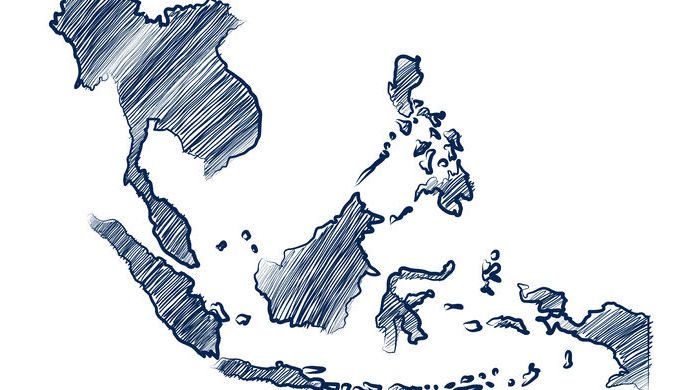A deep dive into the ecosystem for a better understanding, backed by facts and numbers

Everyone knows that the technology startup ecosystem in the private sector is growing and is increasingly becoming more important in South East Asia. To really understand the context, I did a deep dive into the ecosystem to understand the role of private tech startups in the market, backed by facts and numbers.
State of South East Asia Technology Startup Ecosystem 2016 from Eric Tan
As you can see in the presentation embedded above, the State of South East Asia Technology Startup Ecosystem that we published outlines the key insights of SEA’s Tech Ecosystem from the Capital Flows in Private and Public Market to Exit Landscapes and Sectors to Watch. You will also find a list of 110 active private tech investors in SEA.
(Click here for a larger format on SlideShare.)
All the charts below are fresh and juicy, so please feel free to download these images and use them wherever you choose. (Just a quick shoutout to @rictan0 on Twitter will be very much appreciated.)
Also Read: Outlier rounds aside, SEA startups saw US$2.2 billion funding dip in 2016: e27 data
To founders/investors/regulators in South East Asia, here are a few reasons why we should take tech market more seriously.
1. Private tech market growth outstripped SEA public market in the past 3 years

Since 2013, out of six countries (Singapore, Malaysia, Thailand, Indonesia, Philippines and Vietnam) in SEA examined, we observe five public markets fell short of the 10 per cent Compound Annual Growth Rate (CAGR) – only Vietnam’s VN Index achieve more than 10 per cent CAGR.
However, it’s worth noting that Vietnam’s growth is mainly driven by increasing privatisation effort led by the government as outlined by Deloitte in its latest SEA IPO Market Report 2016. This is in contrast to CAGR of 58 per cent in private funding for SEA Tech Startups, showing a strong growth.
We also went from having one unicorn before 2013 to seven unicorns now in the span of four years. This signifies an increasingly grown-up class of SEA private technology companies that have been fuelling economic growth in an unprecedented way. As these companies come of age, we can expect them to play a pivotal role in the regional economy.
2. 110 active investors, US$2.2B in 274 deals in 2016 alone

Approaching end of 2016, we saw a slowdown of venture builders and the rise of accelerators/incubators (both local and foreign). There is a rise of corporate venture capital (CVC) in the region which is worth noting, from virtually non-existent to 14 of them in 2016.
Foreign CVCs are coming into SEA to look for strategic investments and potential business expansion, while local conglomerates and large cap companies are increasingly aware of the disruption of tech startups to their traditional business.
3. SEA funding is concentrated in Seed and Series A round compared to the rest of the world

Huge opportunities are available for Series B round onwards to help startup scale past Series A. VCs with scaling experience/network will have an upper hand in accessing to the best deal. However, for SEA-based VCs, it will be challenging to raise a large enough fund (>US$150m) from SEA-based Limited Partners (LPs) due to lower risk appetite.
Also Read: What I learned from the Avengers of Southeast Asia’s venture capital scene
Majority of the fund will likely need to come from foreign LPs. Taking hints from EU and USA, larger funding round at later stage VC round is essential for a startup ecosystem to provide financial capability and liquidity for companies to grow into unicorns. (Chart from RHS is recreated from GP Bullhound Unicorn 2016 report.)
4. SEA and Australia Stock Exchange won’t be home-run exit destinations in the near future

Bursa Malaysia (MYX) and Philippine Stock Exchange (PSE) haven’t been seen any major announcement related to tech startups IPO. However, ACE Market of Bursa Malaysia, the alternative to the Main market, requires less stringent listing requirement, has got a number of non-Web 2.0 tech companies listed on it.
Catalist, the equivalent of ACE in Singapore aims to create a similar environment, in which its success remains unknown [Source]. Indonesia Stock Exchange (IDX) recently launched their in-house startup incubation program [Source], but this is hardly a sign of readiness for huge IPO. Perhaps a Garena US$1 billion IPO in the US will anchor the investors’ confidence in SEA to consider more tech IPO in SEA.
5. The biggest acquirer in SEA is going to be one hugely successful startup in the region.

Okay, this last point is purely an opinion. Let me know what you think!
—-
This article is originally posted on my blog (www.rictan0.com).
The views expressed here are of the author’s, and e27 may not necessarily subscribe to them. e27 invites members from Asia’s tech industry and startup community to share their honest opinions and expert knowledge with our readers. If you are interested in sharing your point of view, submit your post here.
Featured Image Copyright: 9comeback / 123RF Stock Photo
The post A look back at 2016: The state of Southeast Asia’s tech startup ecosystem appeared first on e27.